UPDATE: At Photokina 2018, Phase One announced that it would now support the RAW files from the Fuji medium format system. I’m super excited about this because this is a much more forward thinking attitude, and it also shows that Phase One are listening to consumers. I know many people were pretty pissed at me for writing this original article, but I’m glad that I did. I wasn’t the only one that spoke up about this, and collectively I do think we made a difference in this instance. Thank you Phase One!!
I now look forward to getting my hands on Capture One and evaluating it as a solution for my photo business!
The original article is published unedited below, but please note that it’s largely irrelevant now that Phase One have changed their views.
The Capture One Pro software has been around for a long time, but with version 11 they have squarely taken aim at Adobe by adding in the same kind of layering functionality that we’ve come to expect in Photoshop. There has been a decent amount of online fanfare about the software this week, and it’s clear that it offers some powerful functionality.
There’s one HUGE problem though.
Whilst there looks to be a lot of great features in Capture One Pro 11, I’m never going to recommend it to anyone that reads my website until Phase One changes some of their archaic policies on camera support. You see, Phase one makes medium format cameras, the kind that you and I can’t afford to buy. They feel threatened by the likes of the new, cheaper medium format cameras from Fuji (GFX50), Hasselblad (x1D) and Pentax (645z). As a result, they have publicly stated that they will not support cameras in Capture One Pro that compete with the other core of their business.
Ridiculous.
They expect people to pay hundreds of dollars for their software, commit hundreds of hours to learning it, perfecting it, building a workflow and asset management system around it, only to find that the camera they aspire to upgrade to isn’t supported? To me it’s a mind-blowingly stupid decision, and it paints the entire company in a bad light.
“we have a long standing policy of not providing support to direct competitors of our core business.”
There have long been rumours of companies like Sony and Canon joining the medium format marketplace, and if that happens then we can assume that their camera’s won’t be supported either. While I’ll admit that for now a Canon medium format camera is a long-shot, a Sony one seems entirely plausible, considering that they make the sensors for the aforementioned Fuji, Pentax and Hasselblad cameras anyway.
So I ask you, do you really want to use software from a company that is openly blocking you from using it with specific cameras? It’s annoying enough when Adobe takes months to add support for a new camera to Lightroom, how would you feel if a company never added support for your new camera? I guess if you’re an enthusiast, and not a professional, then the chance of there being a medium format camera in your future is definitely slimmer. But given the pro-level features in Capture One Pro, and the $300 price point, they’re hardly going after that lower end of the market anyway.
If the rumours are to be believed, there will be a Fuji GFX R camera for Photokina in 2018, and the price is said to be considerably less than than the current GFX 50, presumably because that one will be bumped to a GFX 100. This will create an even lower tier, and barrier to entry for medium format systems. In other words, more people will be able to buy them, and that’s just more people who can’t use Capture One Pro.
Where Is the Logic?
There’s a lot of people out there who are disenchanted with Adobe after they pulled Lightroom 6 license options and fully committed to the subscription model, but to me Phase One’s stance on camera support ruffles my feathers far more.
If someone is thinking about buying a $6500 camera like the Fuji GFx50, they are hardly going change their minds and buy a $40,000 Phase One camera instead when they see that the Fuji isn’t supported by Capture One Pro. So in that instance, Phase One simply loses a sale of Capture One Pro. That’s all. They’re not going to gain a sale of a Phase One camera with this policy. It’s utter madness! Do they really think that their $300 software is good enough to make someone part with an additional $33,000!?
I’ve watched all the videos about the new Capture One 11 software, and I like what I see. I would gladly have parted with $300 for the perpetual license if they had a more open policy about camera support. It’s that simple. I don’t even use the cameras that are currently unsupported, but who knows where my business will be in a year’s time?

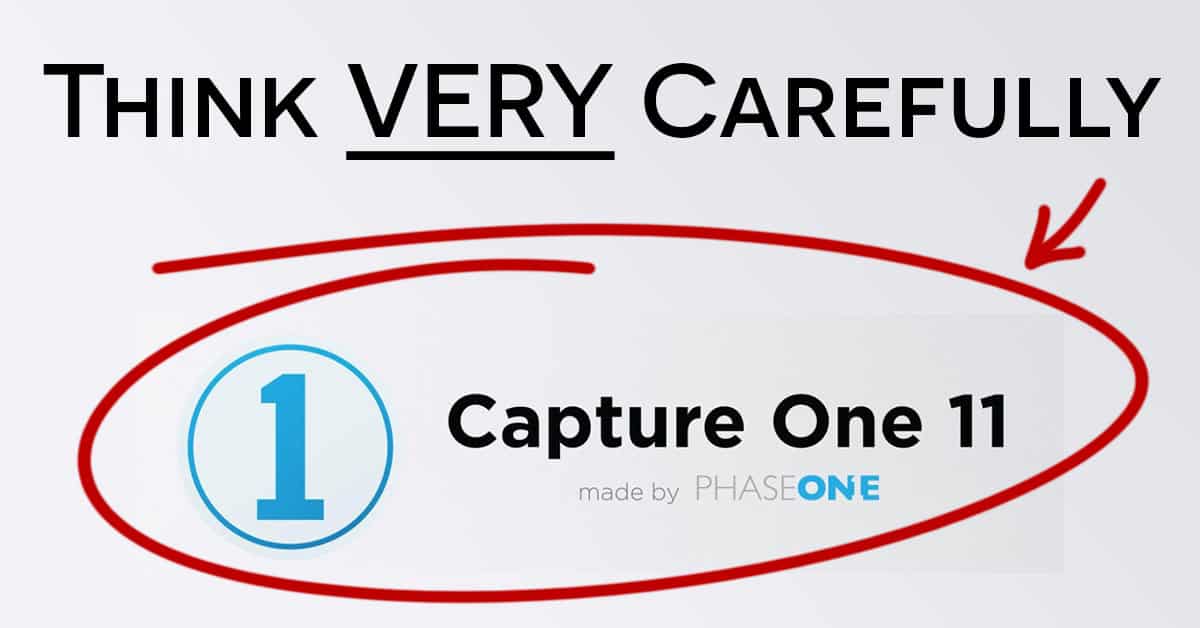
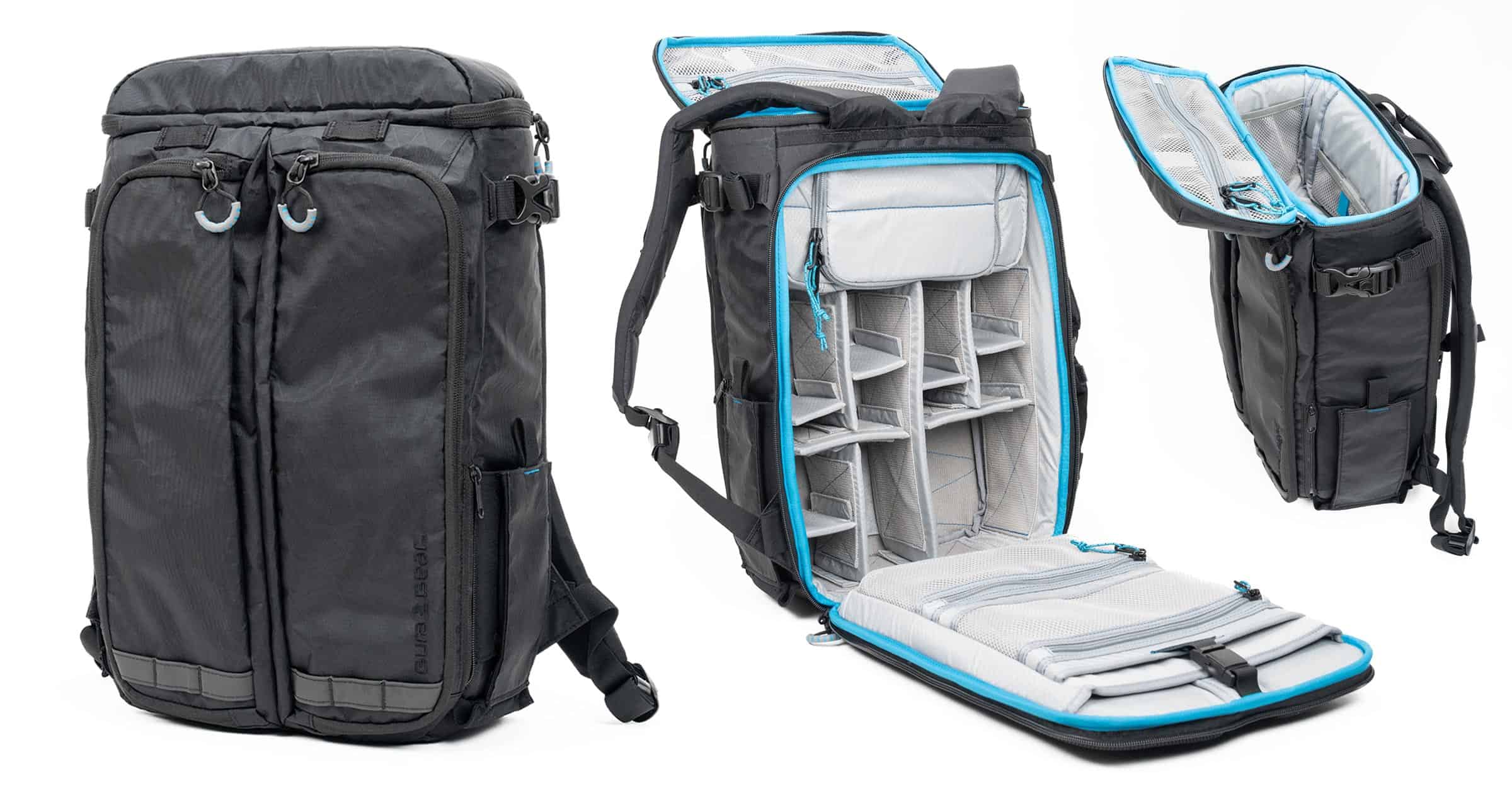
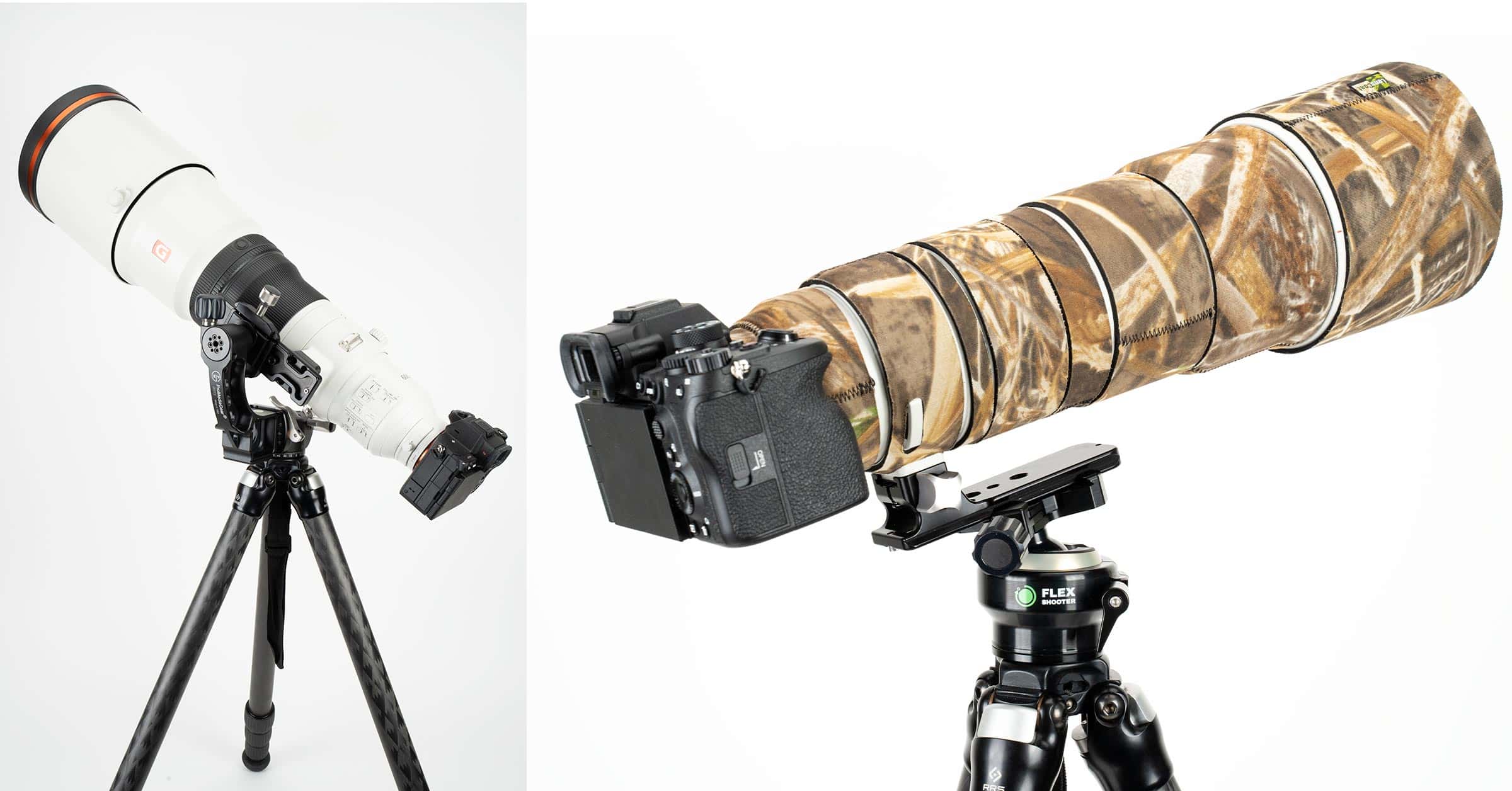
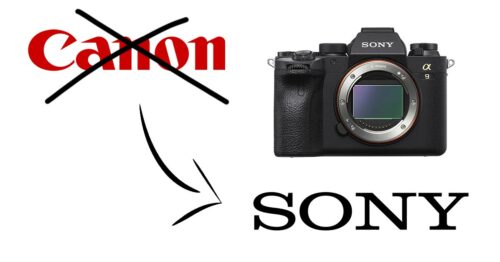
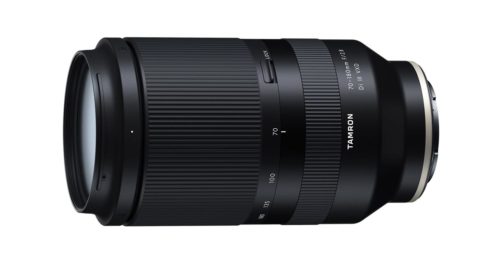

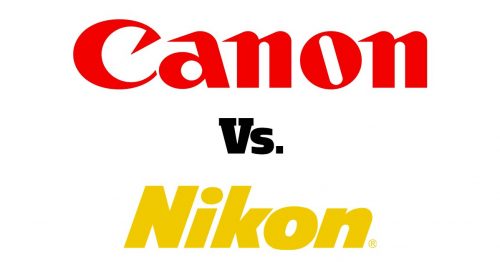
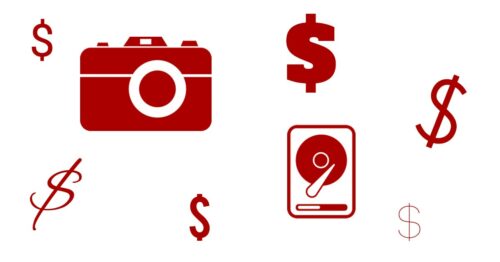
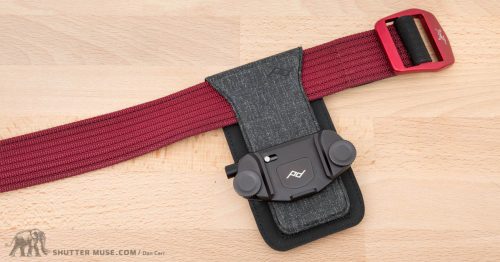
Dan,
Totally agree but… What about the camera companies finally doing something smart like standardize on DNG? Back in the old days you could shoot Fuji color, Kodacolor, Velvia, Portra, Agfacolor and it all got souped in C41. Or if you shot chrome, with the exception of Kodachrome, it was souped in E6.
Companies could create their own digital secret sauce in DNG just like an emulsion (sensor technology, the “look”, is also the differentiator) and we could get on with our workflows without having to wait for support.
I love Capture One for the skin tones, shadow and highlight recovery, and the relatively simple color grading when necessary. The new layers seem to be simple and powerful and since I shoot mainly Nikon it’s a no brainer. Plus the tethering is way ahead of Lightroom. I’ve used a Leica S medium format camera for some shoots primarily because the DNG is so universally supported. The Hasselblad software is way behind by comparison and locks you into their specific workflow. So while I agree Capture One and Phase should be more accommodating the camera companies are at fault here as well.
Thanks for your effort on the site. Really enjoy your posts!
Cheers,
Bill
Yeah you make a solid point. Life would be easier if camera companies would all agree on a standard. Sadly this seems unlikely because they love to try and make you use their own useless apps (Canon,Nikon I’m looking at you..) Thanks for the kind words Bill.
I’ve tried Phocus and while it felt frustrating compared to C1 I actually preferred the exported images as they seemed quite naturally rendered. It works with all cameras and is free.
Interesting! I haven’t tried it!
That’s the joy of living in a noon socialist/communist part of the world. You don’t have to use capture one. There’s plenty of capable editing suites from which to choose. Their strategy may frustrate you, but it’s certainly not uncommon. I know many people who would love to use iOS on a Samsung Galaxy or Moto Z etc but because Apple won’t support any devices other than their own, that’ll never happen. Seems to be a decent strategy for the folks in Cupertino.
That’s different because you make your choice at the beginning – iOS or Android. It’s a clear decision.
With Phase One’s policy, you could be happily using your SONY cameras with Capture One, only to find that their next camera is medium format, and Capture One won’t support it.
That’s the point I’m making, it’s about the future. Sure, right now it’s simple. If you have a GFX-50 then don’t buy this software. But what cameras won’t be supported in the future?
You can call a banana a wrench. It still wont make it a wrench. “Plenty of capable editing suites”? Sure, if your not serious enough to see the difference. I dont wanna be a jerk here. I’ve used and tested C1Pro for the pas 15+ years. Nothing equates it as a pro tool. Talk about Cupertino all you want, they ditched Aperture years ago. That should of given you a clue.
Hi Dan,
I’ve used Capture One for years and the latest update has some very important and useful upgrades to the software. I use Nikon cameras, have no real interest in using medium format cameras, so Phase One’s decision not to support other brands of MF cameras does not affect me. My new D850 is giving me images that are closer to MF images than I have experienced before. I agree with your argument that it is a short-sighted move on their part, but I have no intention of cutting off my nose to spite my face.
Great blog. Keep up the good work.
Thanks for joining the conversation, Clive! And also for the kind words. I’m glad you’re happy with your solution, I guess if you’ve been using it for a while then this makes a lot of sense. I’m a tiny bit jealous, it does look great, but I definitely can’t write off medium format in my future so I’m somewhat stuck. Enjoy the D850! What a camera…
Dan, I only just purchased Capture One, at a cost of USD$250 – and now they expect me to pay another USD$120 for this upgrade? What crap! At this rate, they make Adobe’s subscription model look as cheap as chips!
This is another point that I didn’t go into. A lot of companies are out there shouting “we are not forcing a subscription” but the cost works out being very similar if you keep paying their upgrade fees. I guess that their response would be that at least your current one will not stop working, whereas if you stop paying the subscription to Adobe, you can’t even continue to use the product.
Hi Jean Pierre, I assume that you purchased Capture more than a month before version 11 was released. Phase One were providing a free upgrade from V10 if you had purchased less than 30 days previously. The problem here is where do you draw the line? If they had provided a free upgrade to everybody that had purchased less than 3 months previously, then another group would have been unhappy, though I do accept the level of irritation that you’re feeling. In my opinion, the upgrade price is well worth the enhanced facilities of the upgraded software.
Yeah, I think 30 days is fair. What I think might have annoyed me if I was in this situation, is simply the high cost. Capture One is quite pricey already, and what they are asking for an upgrade cost here is more than the total cost of some other RAW processors such as Luminar or On1 Raw.
I have both capture one pro, LR 6 and Luminar. As far as I can tell, Capture one pro has the best raw process engine. One caveat, is that their color profile is not as good as LR6. I started with capture one pro 9, then upgraded to 10, after trying 11 for about 1 month, I decided to bite the bullet. I do agree that capture one got to stop upgrading one generation per year, instead, they should copy Luminar and Aurora, keep updating for free.
As for Luminar and Aurora, though they have so fun presets, their raw engine is not very good, most of my problem is their high noise level. Also, their spot removal tool is crap. Now I rarely use Lightroom, the only time I use it is for pano stitching.
Thanks for your insights!
To me it doesn’t matter I can get more than enough image quality from cameras like Nikon D850. I agree that it is an extremely stupid decision from Phase One business perspective. People who buy Fujifilm GFX 50 will most likely do so regardless if they have Capture One support or not. However, if Phase One supported them they, would most likely have an e-mail address to these users that could be used for marketing. More sold Capture One licenses would also make the product more interesting for people creating plugins, presets, and even hardware such as customized keyboards, tablets etc. To extend Capture One support to other medium format cameras would also increase the Phase One brand awareness.
Excellent points about the plugins, presets and general growth of the community around the brand!!
You seem to be way off base.
Not only does Capture One have a specific distribution for Sony’s product line(a “Competitor”), but in my experience, it seems to work significantly better with Panasonic(Whose raw files are significantly more complicated and intriguingly compact than anyone else of a similar expected end-result resolution file), Olympus, and Canon’s files than Adobe ever did, up to and including exposing a glaring fault in Adobe wherein the program would slough off large portions of data upon opening the file in Camera Raw.
The GFX50s is not supported because it is a DIRECT competitor. Fuji went around PhaseOne and used the exact same sensor model that is used in one of their cameras in the GFX50s.
You’re attempting to dissuade an entire audience from using this program because your specific model isn’t supported in the way you want it to be(There are ways to put support in place, up to and including TIFF conversion(Maintain your proper colorspace if you want to maintain fidelity), ACR direct opening, etc). This comes across as someone trying to get everyone to boycott a global chain because you had a bad cashier experience, and, if you did your research, you’d see that the policy was in place a year before you wrote this, so the onus is on you to ensure that you check your compatibility.
While I can see some issues with their being no reason to exclude that coverage(all of the sensors in question were made by Sony), Capture One is under no obligation to provide new layers of support to you over time. It sounds to me like Fuji made some bad blood happen, and now they’re being locked out for it, and given that Adobe won’t get their act together on fixing the color reproduction issues in reading Fuji’s RAW files, you may have just bought a camera that has very little end-result use.
Always, always, ALWAYS check your camera’s complete ecosystem before you slide your credit card. You’re not buying something amazing if you can’t even use it.
For some reason you’re writing this as if I own a Fuji GFX camera, which I don’t. It seems as though you didn’t really read what I wrote because I state quite clearly that I don’t own the camera or even Capture One. It’s merely a warning for other people, and I stand by everything I wrote. As for the “went around PhaseOne ” part… you mean Fuji went to an open market supplier and purchased the same sensor as Phase One. “went around” makes it seem like some sort of shady deal or foul play. All they did was purchase the same sensor from Sony – nothing wrong with that. You seem to have missed the point of this article. Phase One are kidding themselves if they think that being able to use their software is going to swing people’s purchasing decision. Both of these 50MP cameras take great photos, but you only have to read the reviews to see what a PITA that Phase One camera seems to be, and there is half the number of lenses available for the Hasselblad system as there is for the GFX system. If Phase One thinks someone is going to be swayed away from a GFX simply so that they can use Capture One, they’re in cloud cuckoo land. If they supported it though, they could probably be selling $300 licenses for it by the boat load to the stacks of GFX owners and soon-to-be GFX-50R owners. They’re cutting off their nose to spite the face.
Interesting observation and report. I’ve used Capture One for a few years as a secondary software package. I used Aperture as my primary software, but thanks to Apple’s great wisdom, that is over now. I transitioned to Capture One after Adobe went to the subscription model for the bulk of my work now. However, I find myself looking at other packages such as On1 Photo Raw. I expect Skylum(Luminar group) will release a DAM solution this year as well.
The cost of upgrading C1 to the next version isn’t cheap, and if I hadn’t gotten my initial copy a few years for an enormous discount, I’m not sure I would go with it now. Some operational eccentricities leave me scratching my head with C1 that amaze me in that they haven’t been corrected yet.
Your point is well taken. I have no plans to buy medium format, but if the cost came down further, I might and being shut out by Phase One’s decision means purchasing other software. Not to mention learning it, so it puts into question the reasoning for buying crippled software like C1.
Thanks for taking the time to join in, Scott. I’m glad you’re on the same page as me. Another point that I didn’t really delve into is that “subscription” is seen as such a dirty word, but when the upgrade costs are so high with some software, you have to question what the $$ outlay difference would really be in the end. I’m also looking forward to the Skylum DAM release! Luminar is a lot of fun to use. I find it really gets my creativity going, whereas Lightroom seems a bit clinical sometimes. Different moods cause me to use one or the other at the moment.
I have strong agreements with you and other people arguing for DNG. If anyone had current sway over the market to make that happen, I think it would be Sony crossing over from hardware open standard into open software standards.
I’m a bit surprised at the Upgrade cost discussion, though. I’ve been using Capture One since version 7, upgraded to version 8, but not to 9 or 10. In hindsight, I should have gone from 7 to 9 to 11 because the even numbered updates seem to be not as significant as the odd numbered, recently. At least, in my opinion.
Also, as long as you stay within the every other cycle, under current Phase One practices, you still get the upgrade discount. Bringing my software costs down to about half to 2/3s an Adobe subscription. Once I realized that I didn’t need every upgrade, it was an easy decision.
If I were to go to Medium Format, I think the added investment would have me doing custom lens and color profiles instead of trusting the C1 profiles as I do with my Sony equipment. In that instance, I would also probably be willing to use something to convert to DNG and then import to Capture One (but I don’t know if that’s feasible, either).
Good points! Thanks for sharing your update strategy! Very interesting.
Dan,
You have a great point in the post, it’s about the future. What I really hate about the lightroom/photoshop subscription is not shelling out the money, but as a hobbyist I see that at some point I want to stop paying as I may be using it less frequent than I did in the past. For years I used PS6 (not CS6) and it was great and good enough for me as a beginner. I did not upgrade before many years later, but I could use it 2/3 times a year. With the subscription I would be locked out, sure I can “see” my files, but I can’t just go back and “do this like in the old days”. Being locked out of the software I once had is what is making me took around (currently using LR6.18 perpetual ).
The same with Capture One Pro, it’s annoying to have the future of non-PhasOne medium format cameras cut off.
Martin
Good points as well Martin. I hadn’t considered your sort of usage case. Not sure what the solution is really. Affinity Photo is a good Photoshop alternative though, and those guys are woking on a Lightroom clone which I think is an exciting prospect.
So my LR is still fine, either Capture One or Luminar are my two top contenders ..
Your LR is fine for now, but if you ever get a new camera, it’s likely that LR will not support the RAW format for it. LR needs to be updated to work with new RAW formats every time there is a new camera. Unfortunately it is my understanding that the version you have will no longer be updated.
That is so true
Wow, interesting thread. I found this by accident and must come back here for other discussions.
As for this question, you can use the DNG converter software to convert raw files to DNG and then LR will be able to read it. It’s another step, but it’s there.
I get where you are coming from but you are overthinking this. If you believe capture one pro is the best software for you, (I am not claiming you think this, merely stating if you do), than you should be using capture one pro. You are saying this software is not for you because it does not support a camera that you currently do not even own?
Furthermore, if in the future, a big IF, you were to decide to buy a medium format camera that is not supported by this software, you would be able to switch over to one of the other software and either stop using this program, and/or use this one for your non medium format pictures, (remember above we are assuming you think this is the best), and a different inferior program for your medium format camera selection.
Thanks for your input. I’m pleased to see so much discussion on this topic. The issue doesn’t just come down to the best mage output through. For someone generating a lot of images, swapping software necessitates major workflow changes and hundreds of hours of practice and refinement in the usage of the software. There’s other factors as well, such as hundreds of presets that I have created, and would need to be created again in new software. I’m just not willing to make a huge switch to something if I’m not sure how long I can use it for. For my own business model, it doesn’t work, but everyone is very specific. For example, if your work is using a medium format on a job, then processing all the images after the shoot and hading them off to the client, then pretty much never touching them again, Capture One might be ok because you can use it at that time. My work often involves delving back into my archive of a million photos.
Wow! So much hate and disinformation. First off lets not talk about subscriptions and cost. I remember a time where Adobe Photoshop took you out $900 CDN every other year. So this is practically a walk in the park. It a professional tool first and foremost, not a prosumer thing. As far as support and direct competition, Hasselblad started that war many moons ago with Phase one. They made sure you could not use Phase backs on the H series bodies. They opened the door to competition and a new war at a time when Minolta had a 645 system ready to be shelved. Please do your homework guys, not all Phase sensors are made by Sony and Fuji does not have the same. The multi-layer system is pretty much exclusive to Phase.
“lets not talk about subscriptions and cost” – If you and your photo business are in a position to not worry about such things, good for you. But I know many people who make a small living from photography, and these things are important to them. A professional tool doesn’t exempt it from comparison to other options on the market.
I started using Capture with a P back on a 500 series Hasselblad a few years ago. I just upgraded to a full 645 IQ280 phase back. The software is awesome. But more importantly the larger sensor on the P, IQ-40, 60, 80 & 100 backs all give that medium format look that I love. All of the 50mp backs to reference are smaller then 645, at which point you are probably fine shooting on a D850 Several of the 50 mp backs do not support 16 bit capture which is key. The phase gear is very expensive but you are buying into a system, a family of equipment that you can truly grow with. Mirrorless MF doesn’t really do it for me. I can turn on the Live View (which is awesome on the cmos and Meh on the CDD sensors) and get the work done.
I teach LR – I use Capture for all of my paid work. The Future is unclear, if I can find a work around Photoshop I’ll take it.
You’re saying don’t buy C1 because they don’t current’y support a camera you MIGHT (or might not) buy in the future. This sounds like borrowing trouble unless you are specifically PLANNING to buy a GX50 or similar. Phase One MIGHT (or might not) change their policy by the time you buy a MF camera. Adobe might throw a fit and decide not to support the camera you bought. Fuji fans may know something about this, and who makes the GX50 again?
Someone once pointed out that we spend $1000 and up on a lens we use SOME of the time. Complaining about $299 for a piece of software that processes EVERY image all of the time seems odd.
Adobe have never not supported a camera, so there’s no precedent there. Phase One are open about not supporting competitor’s cameras. And yeah, you know what, perhaps Phase One will change their mind, and if they do it will be because people like me actually make some noise about such a stupid policy. I sincerely hope they DO change their policy. You don’t think I had that on my mind when I decided to make a public stance on this?
Actually, you are wrong here. Adobe have very well NOT supported camera models if you don’t upgrade to their the latest version that supports your camera. And so does nearly´every RAW software vendor, including Phase One, DXO and others. “If you don’t want to upgrade to our latest version, tough luck!” I guess the easiest way to circumvent upgrading is to use Adobe’s DNG converter. I guess all RAW software will “eat” these files just fine.
And, just as a side comment: I have tried a number of RAW development software, and for me, even if the upgrade price is a bit on the heavy side, Capture One cannot be beat right now. I just don’t buy each and every upgrade. (Even tough I am tempted to go from 10 to 11…)
And by the way, Phase One is also offering a subscription plan for Capture One: https://www.phaseone.com/en/Online-Store.aspx
That’s interesting! Thanks for pointing that out.
Glad to hear that you like Capture One, but your other point isn’t comparing apples to apples. Capture One are clear that they will never support files for competitor cameras. Adobe have stopped selling standalone licenses for Lightroom so you are either a subscriber or you are not, and if you’re a subscriber then you get the upgrades. The option is always there for someone to continue to use their hard earned knowledge of Lightroom, and continue to use their archive structure that has potentially been built over many years. Yes, you have to keep paying to be a subscriber, but that’s a different debate. With Capture One, if you move to a camera that they do not support, there is NO option for you but to move to a different software that does support it. That’s the issue for me (and others).
I skipped the upgrade from 9 to 10 – Went to 11! I love Capture One 11
Great! Glad you like it. What camera are you using?
It seems like they have partnered with Fuji now!
They have, yes. Great news. Myself and a few others were vocal about this and I do believe it helped in this instance. This post has seen huge traffic in the last 6 months.
I’m going to give it a go, as Lightroom isn’t meant to be greatvwith Fuji files. I figure that if I can change camera system I can change software too.
Will try some files back to back and see if I can tell the difference.
I’m considering adding Cap1 to my post-precess suite but I’m still undecided from a cost-benefit standpoint. I don’t think I want to give up Photoshop because I use it for compositing and I think it’s healing tools are far superior to anything in Cap1 or any other Raw processor. My question is: please tell me how, in your opinion, Cap1 is so far superior to LR that would justify adding the cost of it to the Adobe subscription.
I’d really appreciate specifics.
Thanks All!
Well that’s something I can’t comment on yet because I haven’t tried it in any great depth. I plan to, but I haven’t yet. For me, Lightroom is buggy and slow, even when they put out “speed improvements”. That’s the main reason I want to give it a try. I do agree that Photoshop is still worth having, though. I guess it depends how you value your time. I spend at least a few hours a month looking at the spinning wheel in Lightroom. If I can get that back, to spend with my family, it’s worth the cost. I’m sure there are other comparisons of the apps though. Might be worth Googling that. Sorry I can’t be more precise yet!
One important thing to note is that the “huge problem” of Capture One you talk about is nonexistent for many photographers. If you never see a medium format camera at the edge of a football field, or at a press conference, or on a safari Land Rover, or (in most cases) at a wedding, it’s not because they are expensive, it’s because they are unsuitable for action photography. Where is the 10 fps burst rate? Where are the 60-150 focus points? Where is the dedicated metering processor? Where are the Dynamic, Group-area or 3D Tracking autofocus modes?
1. It’s moot. They saw the error of their ways and publicly changed their policies. 2. I’d point out that for many years I was a professional sports photographer and now I’m shooting a lot of fine art wildlife and landscapes. I personally didn’t see that shift coming in my career. Can anyone look that confidently into the future? PS. Don’t see a plot of sports photographers using Capture One…. Photo Mechanic is the go-to solution in every sports press room I ever worked in.
A massive problem for me with capture one 11 ( and also the demo of 12 i tried) is in printing .
Even though you can set up templates with preferences the system wide print settings will always override
your perameters that you set up in capture one . This doesn’t happen in lightroom .
in given the price that i had to pay to get capture one this is a real bummer .
That sounds very odd. Have you talked to them about this?